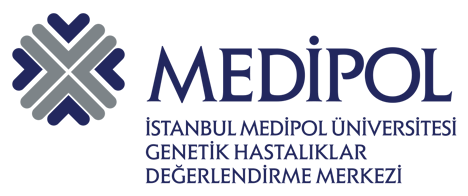Spinal Muscular Atrophy (SMA)
What is Spinal muscular atrophy (SMA)?
SMA is a hereditary motor neuron disease that causes muscle weakness and atrophy.
SMA is characterized by progressive degeneration and muscle weakness and atrophy resulting from the irreversible loss of anterior horn cells in the spinal cord and brainstem nuclei. Motor neurons control movement in the arms, legs, chest, face, throat, and tongue. When signals between motor neurons and muscles are interrupted, the muscles gradually weaken, begin to exhaustion, and fasciculations occur.
SMA can affect a child’s ability to crawl, walk, sit, and control head movements. Severe SMA can damage the muscles used for breathing and swallowing.
The age of onset of clinical signs of the disease may vary from birth to adulthood. Muscle weakness is symmetrical and progressive.
What are the symptoms of SMA disease?
The symptoms and age of onset can vary depending on the type of SMA. Typical symptoms are:
- Flabby or weak arms and legs
- Movement problems and sitting, crawling or walking difficulties
- Muscle fasciculations and tremors
- Bone and joint problems, severe scoliosis
- Swallowing problems
- Difficulty breathing
SMA does not affect intelligence or cause learning difficulties.
What are the SMA types?
The most common type is “SMA disease associated with SMN”. SMN-associated SMAs are divided into 4 types according to the age of onset and the severity of clinical findings. In addition, the SMN2 copy number is among the determining factors of the SMA type.
Main types:
- Type 0 SMA, is manifested by severe weakness at birth, hypotonia, and respiratory distress. There may be a history of decreased intrauterine movements, joint contractures, and atrial septal defects. Babies with type 0 SMA have severe respiratory failure and rarely survive beyond six months despite supportive care.
- Type 1 SMA, is sometimes referred to as infantile-onset SMA or Werdnig-Hoffmann disease. It manifests as a significant weakness and developmental motor decline before six months of age. Average age of onset of symptoms is 2.5 months. Babies can gain head control and the ability to roll, but they can quickly lose this ability. With supportive care alone, affected children will not be able to sit independently.
- Type 2 SMA, begins to affect children between 7 and 18 months of age. Although poor muscle tone is evident at birth or in the first few months of life, children with Type 2 SMA can slowly regain motor skills until around the age of five. The motor skill that can only be achieved with supportive care is the ability to sit independently. Affected individuals subsequently experience a slow decline in motor function and often lose their ability to sit independently in mid-adolescence. Hand tremors are common. Deep tendon reflexes are almost nonexistent. Scoliosis is common with disease progression. Cognitive functions are generally normal.
- Type 3 SMA, typically occurs after 18 months of age. Legs are more severely affected than arms. With only supportive care, individuals walk independently; however, proximal muscle weakness can cause more frequent falls or problems going up and down stairs. Fatigue can significantly impair quality of life and function. Most children with Type 3 SMA who are treated only with supportive care gain in motor function by about age six and then experience a slow decline in function until adolescence.
- Type 4 SMA, typically appears with muscle weakness in the second or third decade of life. There is a certain pattern of muscle involvement that disproportionately affects the weakness deltoids, triceps, and quadriceps. While deep tendon reflexes are preserved in the upper extremities and achilles, patellar reflex may be lost. Affected individuals may have hand tremors. Cardiac and cognitive functions are normal. With supportive care only, the findings are similar to Type 3 SMA but are less severe and ambulation loss may occur after the fifth decade. Life expectancy is normal. Type 4 SMA is the least common form of SMA and affects less than 5% of individuals with SMA.
In addition, it is known that many gene mutations other than SMN1, although rare, cause SMA-like clinic.
How is SMA Diagnosed?
The most common type of SMA, “SMN-associated SMA disease”, is determined by the identification of biallelic pathogenic variants in SMN1. SMN2 copy number is generally among the factors affecting the phenotype.
Treatment in SMA
- Nusinersen (Spinraza®; an antisense oligonucleotide) for the treatment of all SMA types and onasemnogen abeparvovec-xioi (Zolgensma®; gene replacement therapy) for the treatment of type I SMA are among the treatment methods that have started to be applied in recent years. These targeted therapies can inhibit the development of some features of SMA or slow its progression. Effectiveness increases when treatment is initiated before the symptom starts. Studies on responses to these treatments are continuing.
- Proactive supportive treatment by a multidisciplinary team is crucial to reduce symptom severity, especially in the most severe cases of SMA. In case of feeding difficulties, placing a gastrostomy tube early in the course of the disease is appropriate. In the case of gastroesophageal reflux disease and chronic constipation, consultation with a pulmonologist and strict follow-up is recommended. As respiratory function worsens, tracheotomy or respiratory support may be recommended. Surgical treatment options can be used for scoliosis.
Genetic Counseling
SMA is inherited in an autosomal recessive pattern. In the case of consanguinity, the couples are at increased risk of becoming asymptomatic carriers of the same disease. In cases where the mother and father are asymptomatic carriers of SMA, there is a 25% risk of having children diagnosed with SMA in each pregnancy. These couples should be informed about Preimplantation Genetic Diagnosis (PGD) and prenatal diagnosis methods.

